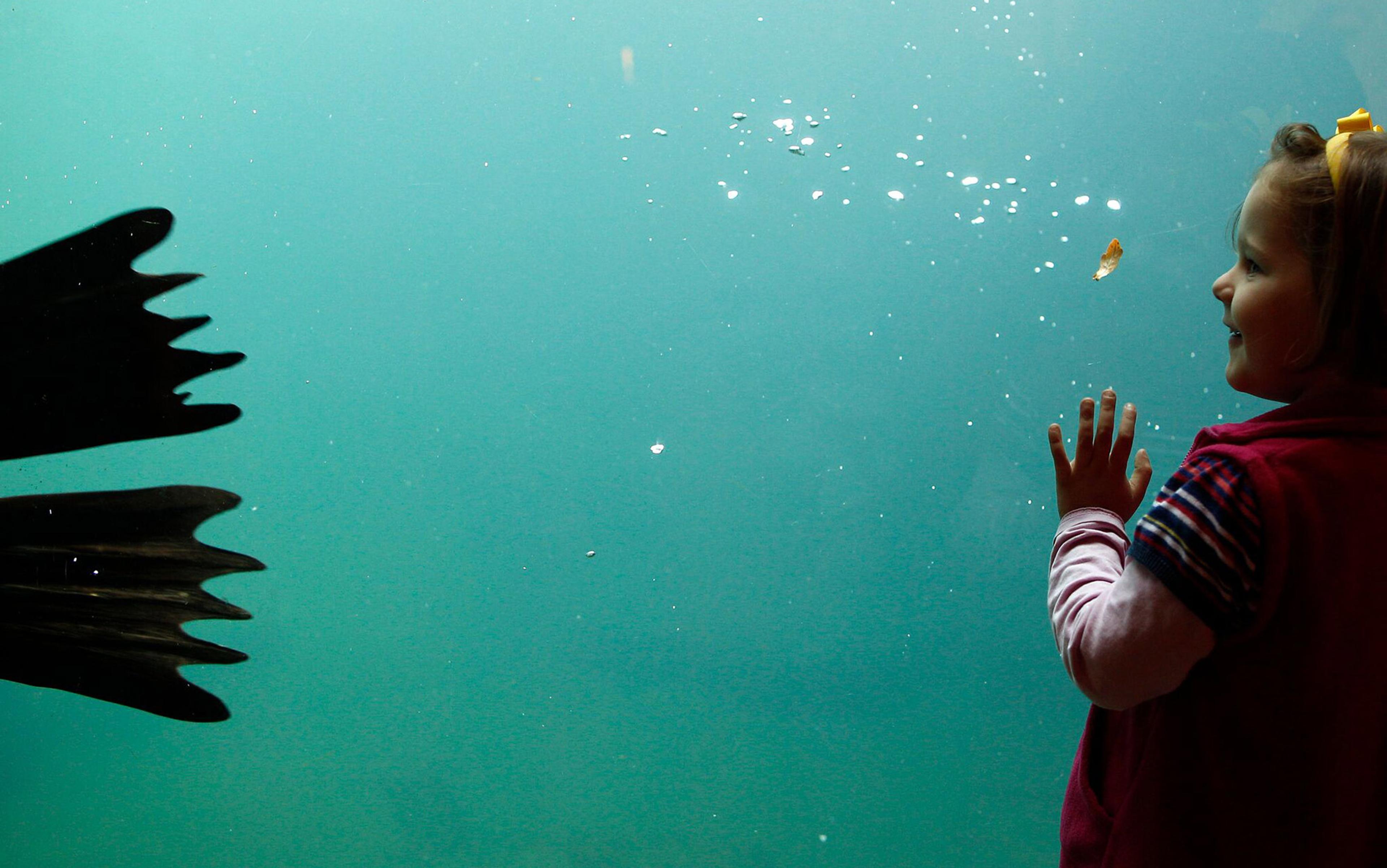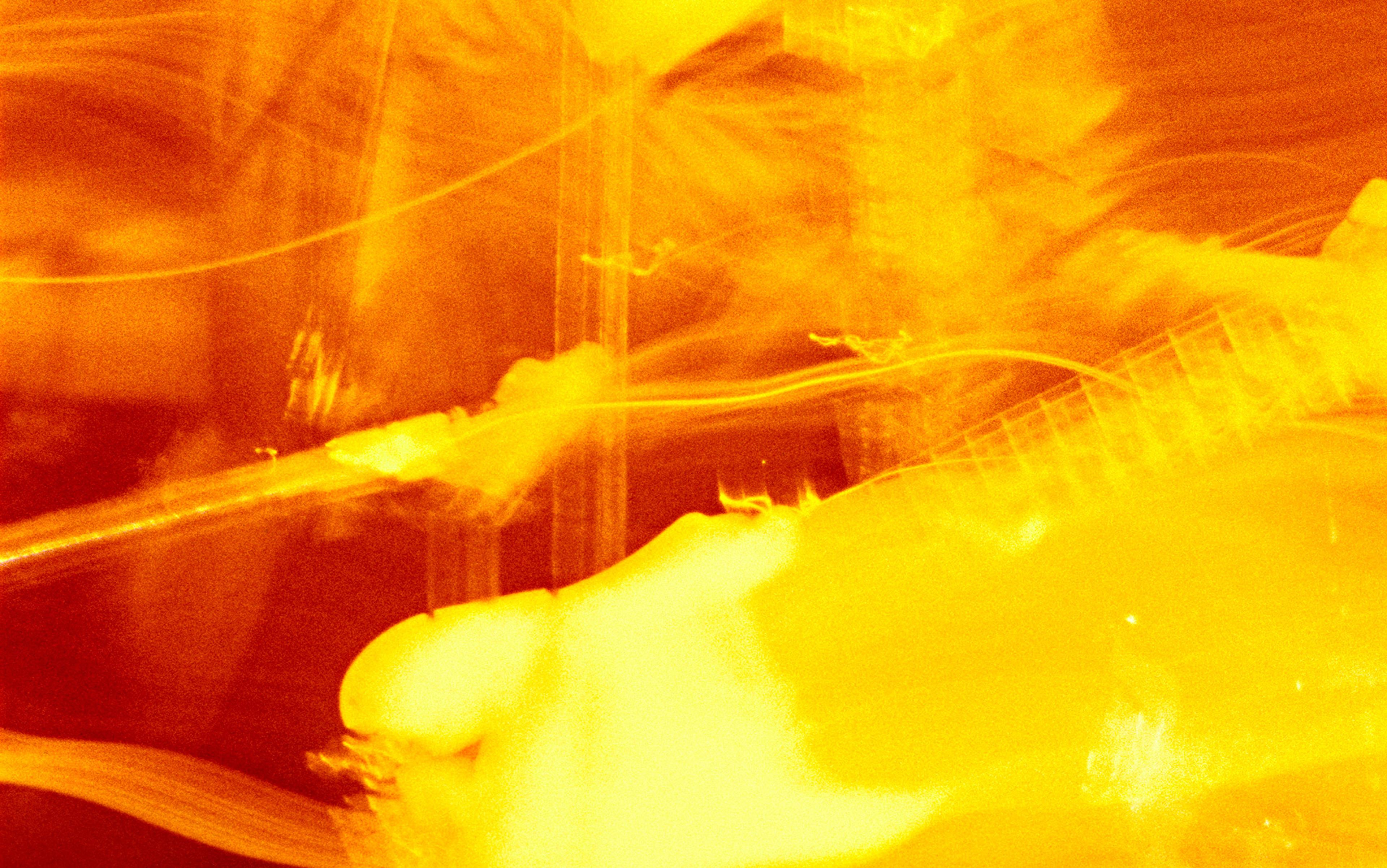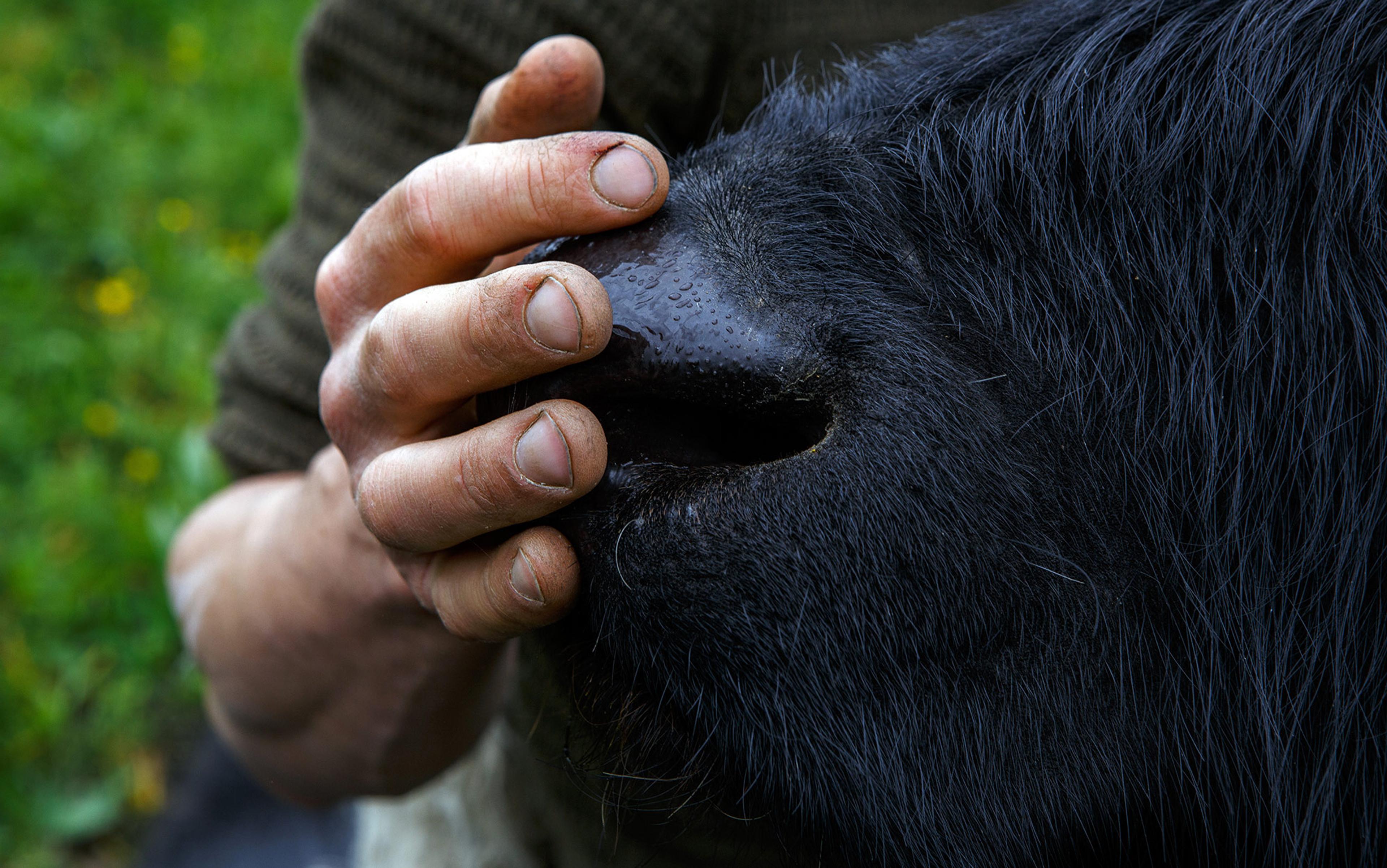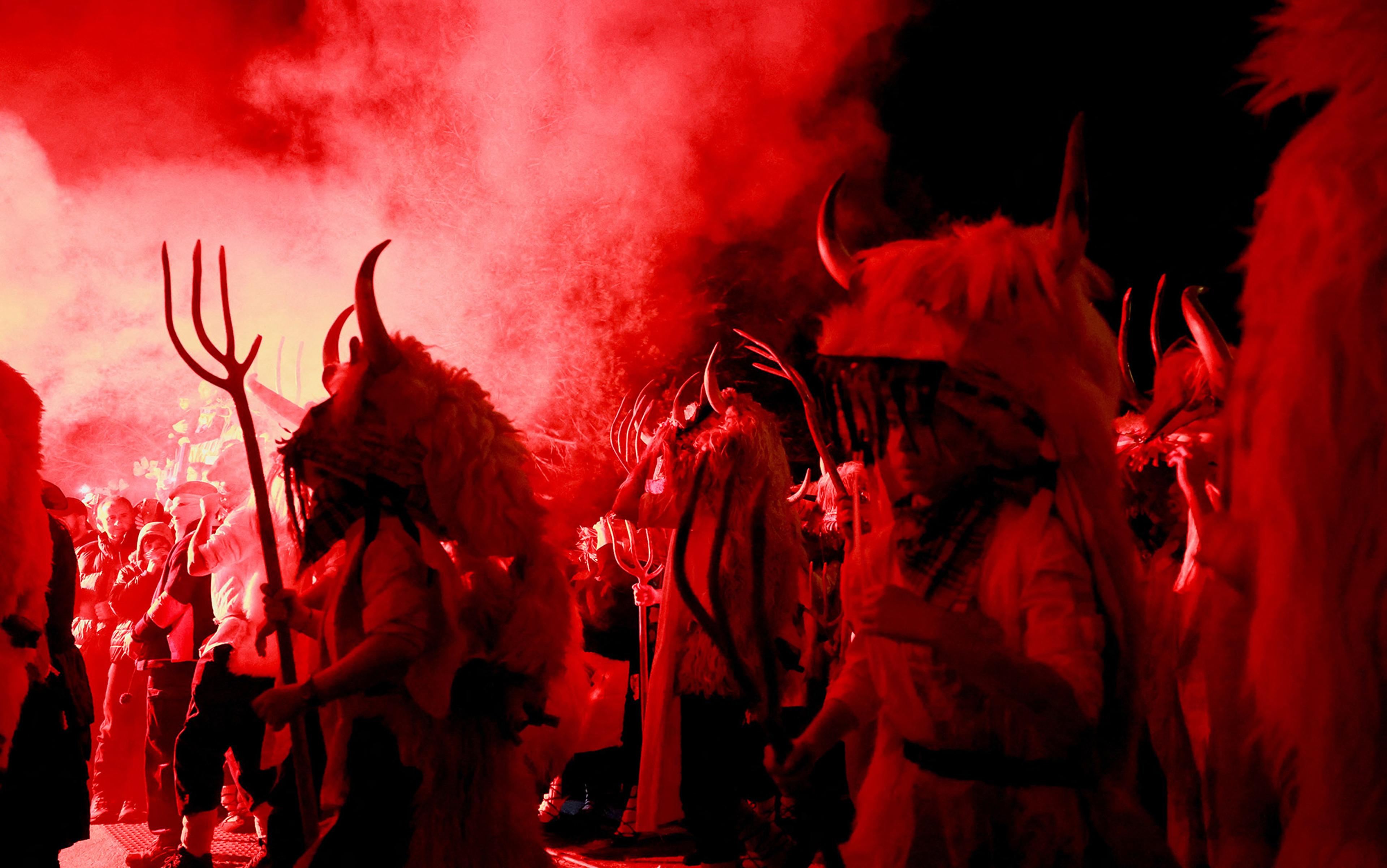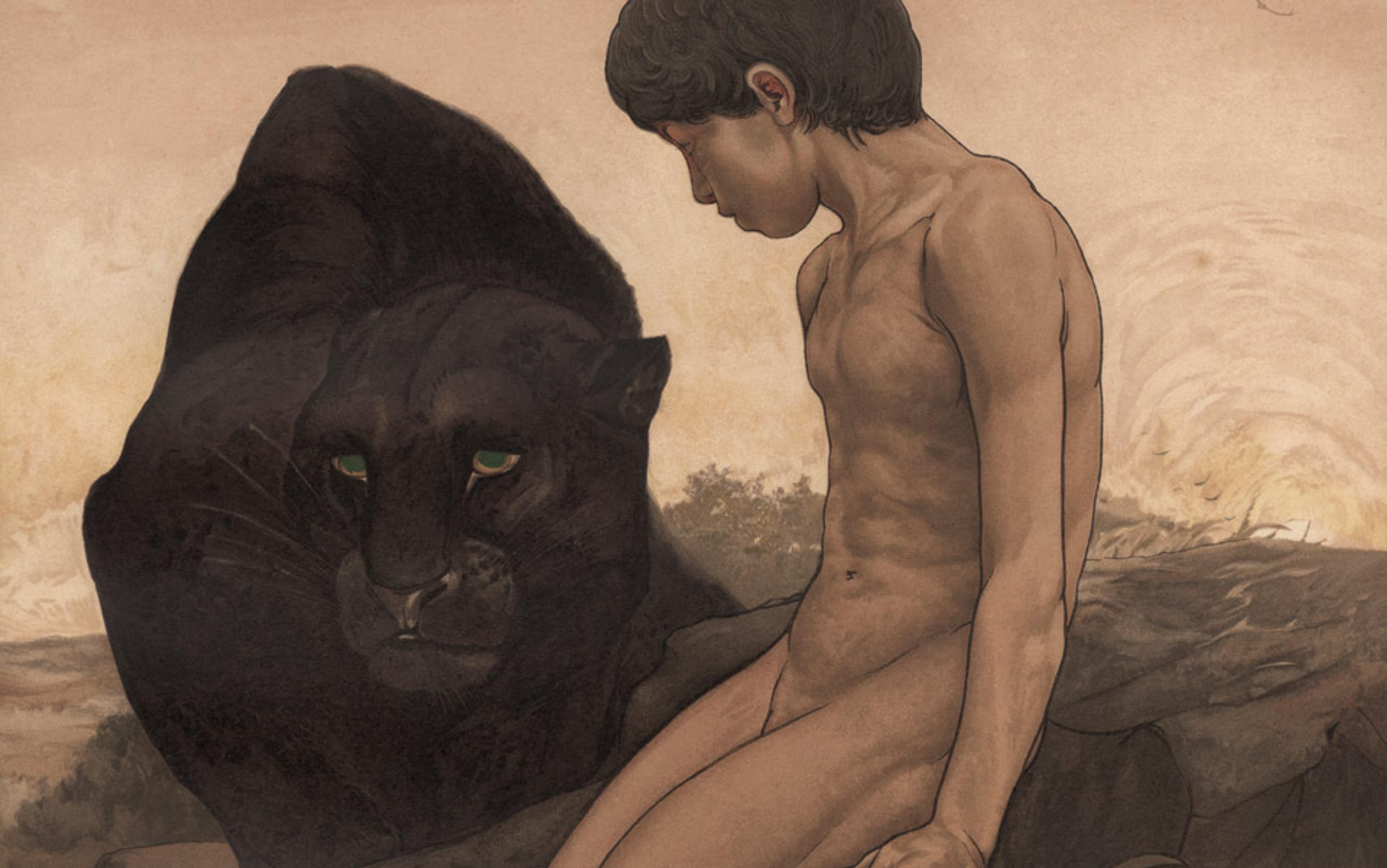Sound is life. The sound of God’s voice created life, in Christian understanding. In the womb, sound is the first of the senses to apprehend the world beyond the body: a fetus is able to hear their mother’s voice, while a chick in the egg hears the song of its parent birds. Hearing is thought to be the last sense to leave us in our dying, and we speak of the silence of the grave.
Healing has traditionally been associated with sound, from the psychological medicine of a lullaby to the chants of monks and nuns in the early hospitals of monasteries, convents and religious centres. The incantations of shamans are some of the oldest of medicines. Melody and song are understood to have healing qualities, ancient and modern, from gong baths to Brian Eno’s album Ambient 1: Music for Airports (1978). When something is well, we say it is ‘sound’.
The body is well when it is in harmony with itself, in its inner balance of homeostasis. In traditional Navajo culture, medicine people are known as ‘Singers’ whose healing work seeks to restore harmony within the individual, and more widely to attune a person with other humans and the world.
Nature’s sounds are healing. The sound of a rainforest; the flowing of a stream; a cascade of a waterfall; frogsong, insect rhythms and birdsong: these heal and salve. We humans as a species were born into our existence hearing the mother-voice of nature and the primal song of the animal musicians who were there before us, drumming, carolling, whistling and hooting.
Hearing the sounds of animals, whose bodies thrum with their calls, we experience viscerally the truths of our existence: that we are manifested creatures, wholly embodied, and that ours is but one voice among many in a gorgeously plural world-choir, where giraffes hum in low voices caressing each other on a savannah evening, where bitterns boom at dawn by a quiet lake, where hedgehogs snore, in a rising half-voiced wheep and exhaled whiffle. Even when the sounds are in the deep infrasound range of elephants, lower than our hearing, we can still feel, right inside us, the deep pulses that throb the air.
Through the sounds of nature, we may move into the fullness of what it is to be a person. That word ‘person’ is from the Latin, persona, the mask worn over the face in ancient classical theatre. Persona is understood to mean the sound (son) coming through (per) the mask. But arguably there is something deeper going on. We are resounders, and perhaps to be a true and fully well person includes being permeated by the sounds that pass through us, being a sounding-board for millipede, muntjac and muskrat. A person is an instrument of listening, played by the everything that surrounds them, resonating with goat-song and puffin-joke and camel-carol. Our bodies rung by the wild voices, the bells, blowings and buglings of life, conducting us to that place both electric and tender where we can feel most fully alive.
In the sickening days of the COVID-19 pandemic, people heard – as if newly – the birdsong. Momentarily, in that world-hour, our droning machinery and technics fell quiet, and we could hear the voices of life in its self-befriending, and the soaring spiritedness of the music of birds lifted people’s morale. Not cured but surely healed.
Birds embody the very quick of things, vitality intensifying the living air that is their element
Birdsong is the quintessential healing sound of nature. In myth, the Irish goddess Clíodhna cared for three magic birds with songs so sweet they cured every illness. In Welsh myth, the birds of Rhiannon sang so exquisitely that their music banished sadness and, listening to them, 80 years would slip by as if it were a day, and there was no memory of sorrow. In Berlin in times gone by, people said, if someone was sick or near death, they would ask to be carried out into the streets at night to hear a nightingale sing for them. Berlin today is the capital city of nightingales, home to more of the birds than almost any other European city.
Birdsong is both fleet and fleeting, fast and evanescent. Quick and quickening, it touches the quick of the spirit. It quickens the woodlands with liveliness, as to be quick also means to be alive, as in ‘the quick and the dead’. Birds embody the very quick of things, vitality or the life force intensifying the living air that is their element. A world without birds is not only silent, it is dead and deadening.
Researchers from King’s College London have demonstrated that seeing or hearing birds improves mental wellbeing and helps to lift depression, and the healing effect can last for up to eight hours. A study based on data from Michigan in the United States found that areas with lower bird diversity have more hospitalisations for mental health conditions than areas with higher bird diversity, suggesting that declining biodiversity may be intricately connected with anxiety and mood.
Having a diversity of species around us is evidence that the world is well, that it is sound, and it is richly medicinal, as humans feel well and whole when we see and hear sounds from a wide variety of animals, birds and insects, the full harmonies of the living world that Henry David Thoreau called ‘a vibration of the universal lyre’.
The words ‘heal’, ‘health’ and ‘whole’ are all derived from the Old English ‘hál’, meaning whole or sound. To be healthy is also to be part of the whole: health is not a solo state of wellness for one but is inextricably linked to the health of all and, in order that all shall be well, each must be well. Every part of livingkind is implicated with and dependent on the health of other species and the wider environment, co-flourishing.
Bernie Krause is a musician and soundscape ecologist. The sound of animals has been personally healing for him, as he used to suffer the effects of undiagnosed ADHD while anxiety totally dominated his life. Then, in a forest in Northern California, he experienced for the first time the power of the forest sounds that brought him, as he writes in The Power of Tranquility in a Very Noisy World (2021), ‘an overwhelming sense of relief both physically and emotionally. It was a safe remedy I would rely on for the rest of my life.’
For decades, Krause recorded natural sounds, concentrating not so much on an individual creature’s performance but on the whole acoustic world of an environment, and listening to everything from insects and frogs to birds and mammals. He terms the collective chorus the ‘Great Animal Orchestra’, where creatures inhabit a sonic niche, a particular place in the soundscape of their precise ecology.
The world of animal sound is always moving, drifting, ebbing and flowing, but forming an intense and aesthetic concert in various ecologies. At the top, higher than human hearing and far above the top notes of a piano keyboard, are the ultrasonic calls of bats. Down a little are the cicadas and insects. Further down, the bright screech of the swift. Then, down through the piano’s top octaves, many other birds, down to cats, some monkeys and human voices. The sloth is said to sing at night, in the musical intervals of a human scale. Bear cubs in the den hum as they suckle. Gibbons sing for sunrise in glissando phrases (and in Indonesia their songs are considered so beautiful that Dayak myth says the sun rises in answer). Chimpanzees hoot, in rising and falling cadences for storms and for dawn. Further down the keyboard is the sea lion’s roaring call, and then below the lowest notes of the keyboard is the infrasonic humming of giraffes, and the basso profundo of elephants and whales in their infrasonic lowings.
The sound of bees buzzing makes something in my spirit feel calm, reassured and also gently tingly
And at the centre is the bee, right at the core of it all. When bees are flower-buzzing, they hum a half-note above Middle C, at the core of the keyboard, right where they belong, in the sweet heart of everything. The music of the animals vouchsafes us, leaving us calmed and invigorated at the same time, sung into the eternal present as life is ceaselessly sung into being, sounds swelling, filling, resounding, flourishing and made whole.
We know in our most atavistic selves that we are made whole in the healing wellness of all, when livingkind is sound and whole in itself, a net of wild melodies that we can rest in.
The sound of bees buzzing makes something in my spirit feel calm, reassured and also gently tingly. I felt that it was a healing sound before I learned its factual truth. Bees buzz from about 10 to 1,000 Hertz, and these sound frequencies resonate with organic tissues that promote healing: the sound stimulates the cerebrospinal fluid in the brain and spine, causing it to resonate and aiding the immune system, circulating nutrients and filtering the blood. These sound frequencies also affect the pineal and pituitary glands, the hypothalamus and the amygdala.
My garden is incomplete if it is silent. It needs bees in order to flower aurally with that sweet susurrus sounding the blossom in its blessing-song, humming that all is well and all shall be well. The bee is a sweet alchemist, turning pollen into honey and Hertz into healing.
The ancient Egyptians were the first to describe cerebrospinal fluid around 3,000 BCE, and some say they had a tradition of ‘bee teachings’ in which the humming of bees was understood to stimulate the release of the ‘elixirs of metamorphosis’, an exquisite phrase for conjuring the soft thrill that the buzzing of bees gives us.
In Slovenia, a country rich with beehives, there is a tradition of using the sound of bees for healing, involving people lying down in a room with hives of thousands of bees. Firefighters and others with stressful jobs use this as a technique for relaxation and recuperation after traumatic call-outs, using the sound and also the smell of the bees – beeswax, earth and honey – as healing. One beekeeper interviewed by the BBC said he records the sound of the bees and, if he has difficulty sleeping, he will ‘turn on the buzz of the bees, and float away.’
Many schools in Slovenia have beehives on the premises and it is common for pupils who are restless and upset to be sent to the bees to be cared for – the child can lie in a net like a large hammock near the hive and the buzzing presence of the bees calms them.
Some months ago, the American composer David Rothenberg, in his pursuit of animal music, made a recording of pond insects and sent it over to me. Listening to this insect chorus, with a variety of species crackling, ticking and chirping, flooded me with a sense of wellness. It sounds full to the brim, both complete and diverse like a perfect gathering. In a pond, the insect orchestra is an accord of sounds in neat-tucked tidiness, intimate and close. It has the same effect on me as ASMR, the autonomous sensory meridian response, where certain sounds make you feel at once thrilled and soothed, ecstatic and serene. I now have one of Rothenberg’s special hydrophones so I can listen to pond music wherever I go, and the first time I tried it out was at a loch on the Aigas estate in Scotland, with the author and naturalist John Lister-Kaye, whose reaction was to feel it as something that would gentle the mind into sweet sleep.
I can’t help resonating with insects: they give me good vibrations and I’m not alone. Amazonian people say the song of the insects, humming and buzzing, makes a strong impact on people and is associated with powerful transformation and the fertility of nature. When the Lakota medicine man Lame Deer described the perfect soundscape for a holy man, he noted the preference for a place with ‘no sound but the humming of insects’.
This is how two treehoppers (small insects) communicate. A treehopper squeezes its tummy to send vibrations down its legs, along a plant stem and up the legs of other treehoppers, giving them good vibes. Humans can’t hear the vibrations except through a vibrometer, which converts them into audible sounds. I’ve heard it – a rumbly, soft kind of noise with upstrokes of jazz clarinet in miniature. Treehopper The First, who happens to be male, purrs, punctuating it with a highly suggestive ticking sound. You can almost hear it in translation: ‘I like you, I really really do. Shall we, eh? Shall we, eh?’ Treehopper The Second, who happens to be female, replies with a warm, assentive hum. I hear it in translation: ‘Yes, I said, yes I will. Yes.’ In its resonance of lush voluptuousness, it is healing, in impish vivacity.
Then there’s dolphins. In the book Dolphins and Their Power to Heal (1992) by Amanda Cochrane and Karena Callen, the sound engineer Tony Bassett suggests that dolphins may pulse frequencies of around 6 Hz that attune human brainwaves to a theta state of deep relaxation and, arguably, in this meditative state, bodily healing can take place. Many humans who spend time with dolphins report healing responses to the point of euphoria. Part of that may be explained by dolphins appearing to ‘smile’, and by human expectation of healing with cetaceans. In addition, Bassett has found that frequencies in the region of 2,000 Hz appear to trigger the production of endorphins in humans, and dolphins do emit sound in that range.
Bonobos laugh as if their organs are being massaged by the bubbles of a hundred and one jacuzzis
The sound of a cat’s purr is thought to be healing for humans as well as for cats themselves. Domestic cats typically purr within the range of 20 to 27 Hz but can reach 150 Hz. When humans are treated with frequencies of around 20-50 Hz, bone strength can be improved by up to 20 per cent, the bones hardening in response to the pressure, suggesting that the cat’s purr could help with osteoporosis. The purr-frequencies of cats correspond to vibrational frequencies used to treat oedema, muscle strain, joint flexibility, shortness of breath and wounds. Healing in tendons and ligaments can be treated with higher frequencies, closer to 120 Hz. The range of a cat’s purr is known to relieve both chronic and acute pain. The vibrational stimulation of a cat’s purr also improves blood circulation. Old women with their cats on their laps maybe intuit healing properties, unconsciously treating osteoporosis and providing themselves with the furriest and warmest kind of pain management.
Animals may use their voices to draw us into communication with them, body to body. Adult cats, in the main, do not mew: they learn to mew to us, and choose the sweeter, higher tones that we appreciate. Orangutans use physical gesture to communicate and, if they want to communicate with us, will use gestures they know we understand. We feel an urge to mimic birdsong, and composers such as Olivier Messiaen used human instruments to imitate the birds. From their earliest years, children try to ‘talk’ to animals, with the ‘woof’, ‘baa’ or ‘moo’ of domesticated animals.
Another way in which animal sounds are healing is the infectious sound of their laughter. Bonobos, if tickled, make a choked he-he-he gasp of laughter, followed by a peeeep of pleasure. In fact, they laugh until they fart. Their laughter sounds like a human who laughs so hard that they are clean out of breath, but still can’t stop; they’re laughing in fits and in stitches, their entire body convulsed with vibrations as if their organs are being massaged by the bubbles of a hundred and one jacuzzis. Laughter, the best medicine.
Try a kea parrot. Kea parrots are mischievous birds of New Zealand, with olive and orange colouring, and they are known as the clowns of the mountains. When they laugh, the sound cascades happily down an octave and triggers an automatic play-reaction in other keas, launching them into spontaneous aerial acrobatics, play-pouncing and tussling each other. It also elicits a helplessly happy playstate in my mind and I want to chirp along with them.
When it comes to vitality, laughter is the dog’s bollocks. Or the chimpanzee’s clitoris. Female chimpanzees may laugh when they tickle their own fancy, using a stick to rub their genitals. Some 65 animal species are known to laugh while playing, including many primates, foxes, badgers, polecats, mongoose, cats, cows, kangaroos, elephants, whales and seals, the Australian magpie and the budgerigar. Rats, if tickled, chirp with laughter far above our hearing range but ultrasound microphones can record and replay them in a lower register. I’ve listened, and it is the sweetest sound, lit with chirrups and tiny squeaks.
I have a friend who farts like a horse. More exactly, he farts as unselfconsciously as a horse, without the strange embarrassment we have come to associate with our own bodies’ emanations and eructations. Animals are not bourgeois about these things. ‘Be a good animal, true to your animal instinct,’ wrote D H Lawrence in The White Peacock (1911). Animals model a healthy way to be fully present in the body not as an appendage to our emotional and mental lives but as the very axis of vitality. They offer an almost irresistible invitation to be physical, to inhabit our skins and smells, to feel ourselves as pelt, paw and feather. Leave your scent-marking on the gatepost. Catch leaves in your snout. Know the belly-drum and the barrel-cock, the shanks and teats and horns. Like this, we can breathe in electric air, brimful, right to the very edge of our carnal selves, lips on the rim. Within ourselves, we become a carnival of carnality, parading our bodies, preening like peacocks.
Chimpanzees perform ‘waterfall dances’, swaying rhythmically, stamping in the streams, throwing rocks to crash against others, drumming with the waterfall in uproarious exuberance, dancing with it, magnifying its force, their godbody on full alleluia. The chimp shakes the branches to rattling, getting everything going, struck by his primordial imperative: dance to the music of this moment. When the water churns with life, he salutes it with his own resounding spirit.
Perhaps the primates feel the transcendence that a stamped rhythm can offer, the ecstasy of trance-dance, when the spirit is both embodied and ecstatic, known to spiritual traditions from Jesus as the apocryphal Lord of the Dance to the Sufi whirling dervish. Drumming up life, energy and vitality thrumming through the body’s instruments.
Chimpanzees have also been seen performing ‘raindances’ and, in one filmed occasion on the shore of Lake Tanganyika, a jungle storm crackles brief but heavy and a chimp climbs a tree, swinging on a vine with a thumping rhythm. From a cloudy day in mid-Wales, watching safely online, my mirror neurones go AWOL, totally flipped out by the chimp’s drumming rhythm and stamping swing, and I am swaying side to side on the same vine, with a chimp I’ve never met in a place I’ve never seen. It feels as if he is waking and rousing the sleeping world to the dynamism of the storming dance of life. I am swept up into his carnival, hoot-laughing with intoxication. Because I am at a safe distance. But if I’d been there, I’d be petrified. In the video, the camera pans away from the chimp and we see that visiting humans are standing motionless in identical grey cagoules like drenched ghosts, perhaps thinking it might be risky to move a muscle or raise a peep in such a charged atmosphere.
A fly, too early on a summer morning, irritates me insanely with the sheer stupidity of its drone
It’s magnificent to hear lions roaring when they can’t attack you: but how terrifying to hear the roar of a hungry or angry lion nearby. Then, your body is on high alert: it is being sounded and the thunder shudders through you. Terror. Cold sweat. Pallor. You know that you are prey, and you know that they know. My body no longer a carnival: I could be carne – meat.
Our own bodies are our first experience of animals, and our physical reactions can happen before our minds respond. The disturbing animal sounds are fiercer tutors to our carnal beings.
Rattlesnakes rattle us. Hyenas laughing remind us we may be the butt of their jokes. Foxes at night sound like babies being tortured. The huffing snort of an upset horse is agitating. Even animals that can’t harm us can disturb: I admit I get terribly startled by pheasants leaping up churring from the ground. A fly, too early on a summer morning, irritates me insanely with the sheer stupidity of its drone. A single mosquito can drive me half demented.
This sense of our own carnality, which we learn both from within ourselves and implacably from the animals, is profoundly healthy. It teaches us that we are but one animal among many, showing us that human sound alone is insufficient and unhealthy because it is unnatural, unbalanced, and out of harmony with the All. The animals are collectively the ground bass of normal.
When human voices quake us, screaming a dissonance of lies, dishonesty like nails on a blackboard scraping out a malevolent seventh to spoil the sweetness of accord, and rasping the nastiest lie that only humans matter, the animal voices save us, their sounds are the tonic of the chord and also the medicinal tonic, the rightness of the physical world played in the home key. The animals call us into the belonging world where we matter and they matter, where matter matters, where the unashamed physicality of our being is embedded in the true world, shared and live.
The orchestra of animals is an inveterate conscience reminding us of the glittering infinity, multivocal, a speckled plethora of polka-dotted sounds, tawny roars, turquoise peeps, tangerine chirrups, cavalier in the reckless plurality of life.


